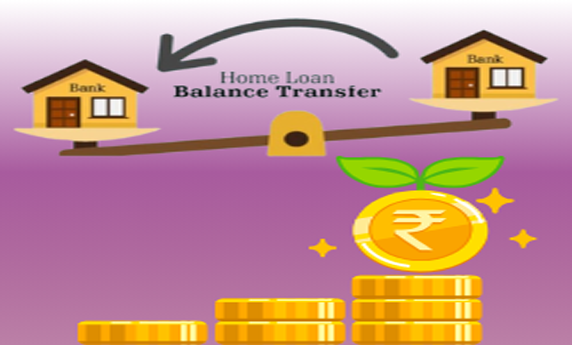Loan Conversion vs Balance Transfer – Calculate Refinancing Costs
Refinancing your home loan can be a strategic move to reduce your interest rate, lower your monthly payments, or adjust the term of your loan. Two popular options include home loan conversion and home loan balance transfer. This post explores both methods, helping you calculate the refinancing costs and make an informed decision.
What is Home Loan Conversion?
Home loan conversion involves adjusting the interest rate of your existing loan with your current lender. This option can be desirable when interest rates have dropped since you first took out your loan. A key aspect to consider is the home loan conversion fee, which lenders charge to facilitate this change.
Advantages of Home Loan Conversion:

Disadvantages of Home Loan Conversion

What is a Home Loan Balance Transfer?
A home loan balance transfer allows you to move your existing loan from one lender to another that offers a lower interest rate. You can calculate your EMI and as well as the lum sum amount through Home Loan Emi Calculator. This process can lead to significant savings over the life of your loan, especially if the home loan balance transfer interest rate is substantially lower than your current rate.
Advantages of Home Loan Balance Transfer

Disadvantages of Home Loan Balance Transfer

Conclusion
The decision between a loan conversion and a home loan balance transfer depends on individual circumstances, including current and potential interest rates, fees, and your financial goals. Consider consulting with a financial advisor to evaluate your options based on your situation.
- Lower interest rates without changing lenders: One of the primary advantages of opting for a home loan conversion is the ability to take advantage of lower interest rates without the need to switch lenders. This can lead to lower monthly payments or a shorter loan term, depending on how the conversion is structured. The home loan interest rate conversion option is desirable in a declining interest rate environment, where borrowers who locked in their loans at higher rates can adjust to the current lower rates offered by the market without severing ties with their existing lender.
- Simplified Paperwork Compared to Balance Transfers: Another significant advantage of home loan conversion is the reduced administrative burden compared to undertaking a home loan balance transfer. This simplicity is due to several factors such as fewer Documents Required. Typically, a loan conversion with your existing lender requires less paperwork since they already possess your financial history and records.
- Conversion fees may offset interest savings:There is the potential for the home loan conversion fee to negate the benefits of lower interest rates when choosing a home loan conversion. There are upfront costs, such as home loan conversion fees, which lenders charge to adjust your loan’s interest rate or terms. While these fees are typically lower than those associated with a balance transfer to another lender, they can still represent a significant upfront cost.
- Limited to Options Provided by Your Current Lender: Another drawback of home loan conversion is being restricted to the options available with your current lender, which can limit your ability to secure the best possible terms. The interest rates offered by your current lender for conversion may not be as competitive as those available in the broader market. For instance, if you’re looking to switch from a fixed-rate to an adjustable-rate mortgage (or vice versa), your lender may not offer terms as favorable as those from other financial institutions.
- Potentially Lower Interest Rates thanYour Current Loan: The allure of securing a lower interest rate is one of the most compelling reasons for a home loan balance transfer. Here’s how lower rates can benefit borrowers: Lower interest rates directly translate to lower monthly mortgage payments, freeing up cash for other financial goals or investments. Even a slight reduction in the interest rate can lead to substantial savings over the life of the loan. For instance, on a large loan amount, even a 0.5% reduction in the interest rate could save thousands of dollars in interest.
- Opportunity to Renegotiate Loan Terms: A home loan balance transfer not only offers the chance to benefit from lower interest rates but also provides a unique opportunity to renegotiate the terms of your loan. Borrowers have the opportunity to adjust the tenure of their loan during a balance transfer. Also, depending on the market conditions and personal preference, borrowers can switch from a fixed-rate to a variable-rate loan or vice versa. This flexibility allows borrowers to take advantage of lower rates when the market is favorable or lock in a fixed rate for stability.
- Detailed Application Process: The application process for a home loan balance transfer can be intricate and time-consuming. The new lender will conduct a thorough review of your financial situation, including your credit history, current income, employment stability, and existing debts, to determine your eligibility for the new loan terms they offer. Your new lender may require a fresh valuation of the property being mortgaged to ensure it meets their lending criteria.
- Requirement of a Comprehensive List of Documents: The transfer necessitates assembling a list of documents for a home loan balance transfer, which can be extensive. Typically, this list includes but is not limited to:
- Identity proof (such as a passport or driver’s license)
- Address proof
- Income proof (including salary slips and tax returns)
- Bank statements
- Original property documents
- Existing loan documents
- NOC (No Objection Certificate) from the current lender.


Comments